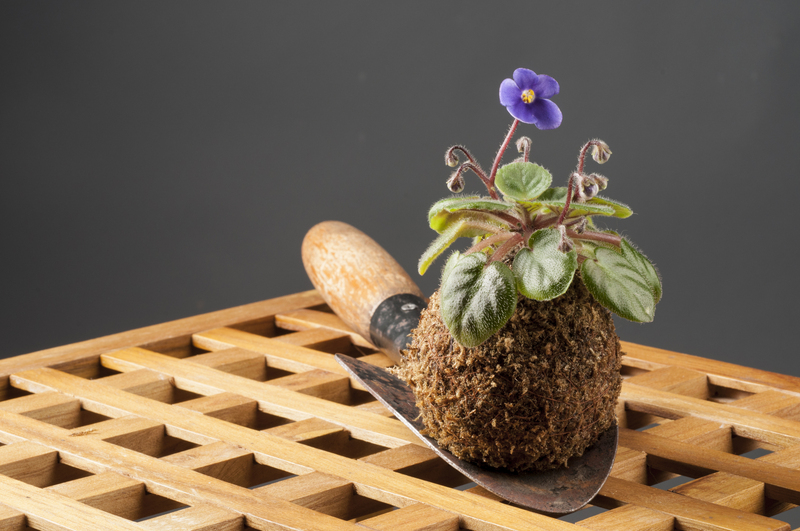Cultivating a Nature Wonderland for Kids in Your Backyard
Posted on 15/09/2025
Cultivating a Nature Wonderland for Kids in Your Backyard
Are you searching for ways to engage your children with the outdoors? Turning your backyard into a nature wonderland for kids isn't just a dream--it's an attainable, magical reality! From bug hotels and butterfly gardens to sensory trails and mud kitchens, the possibilities are as vast as your imagination. Here's a comprehensive guide to cultivating a backyard nature paradise that is safe, educational, and irresistibly fun for kids.
Why Create a Nature Wonderland for Children?
Today's kids spend less time outdoors than ever before. The benefits of interacting with nature are well-documented: improved physical health, enhanced creativity, and a growing sense of stewardship for the environment. By transforming your backyard into a nature play haven, you create daily opportunities for your child to:
- Explore and appreciate wildlife and plants
- Learn through hands-on discovery
- Develop resilience and social skills
- Experience the joys of unstructured play
- Boost mental well-being through outdoor time

Essential Planning: Designing Your Backyard Nature Wonderland
Every great wonderland starts with a thoughtful plan. Consider these essential questions as you begin:
- Safety First: Are there hazardous plants or pests that need addressing? Fencing, shade, and soft ground (like grass or mulch) are important.
- Age Appropriateness: Is your design suitable for your child's age and interests? Toddlers may need enclosed spaces, while older children will love areas for climbing or building.
- Engagement: What elements will spark curiosity, sensory delight, and creativity?
- Maintenance: Can you easily care for plants and clean up play areas?
Backyard Size Doesn't Matter!
*Even the smallest city yard or balcony can become a backyard nature haven for kids.* It's not about the size--it's about packing your space with opportunities for exploration. Raised planter beds, wall gardens, and container habitats can thrive in compact spaces.
Top Elements to Include in Your Backyard Nature Wonderland
1. Wildlife-Friendly Plantings
Planting native shrubs, flowers, and trees is the foundation for creating a nature-rich backyard experience. Native plants attract butterflies, bees, songbirds, and pollinators, offering children a front-row seat to the wonders of local wildlife.
- Butterfly Gardens: Choose plants like milkweed, coneflowers, and lavender to welcome butterflies.
- Bee Havens: Include salvia, sunflowers, and wild thyme to support wild bees.
- Berry Bushes: Add raspberries or blueberries for summer snacking and bird watching.
- Trees for Shade and Shelter: Even a small dwarf fruit tree can provide habitat and a shady retreat.
2. Water Wonders: Backyard Ponds and Birdbaths
Water is a magnet for wildlife and children's curiosity. A simple birdbath, bubbling fountain, or small pond can introduce frogs, dragonflies, and dozens of bird species to your backyard nature sanctuary. Involve your kids in daily refills and bird observation for an ongoing science lesson!
- Safety tip: Always supervise young children around water; use shallow features or cover ponds with netting if necessary.
- Muddy Play: Set up a designated mud play zone or "mud kitchen" for sensory fun and creative, messy play.
3. Secret Spaces and Hideaways
Kids cherish spaces that feel like their own secret world. Create corners with leafy tunnels, bean teepees, or willow huts where they can hide, read, or imagine grand adventures undisturbed. Even old sheets draped over tree branches or a small play tent can conjure this wonderland feeling.
4. DIY Nature Play Equipment and Loose Parts
Unlike traditional plastic playgrounds, a real backyard wonderland for children is full of "loose parts": sticks, stones, pinecones, logs, and leaves ready to become fort walls, magic wands, or fairy houses in ever-changing games.
- Balance beams: Use logs or sturdy planks close to the ground for gross motor play.
- Stepping stones: Large flat rocks or homemade stepping disks create paths through flower beds and lawns.
- Sand and gravel pits: Add shovels, buckets, and toy dinosaurs for hours of digging and discovery.
5. Sensory Gardens and Paths
*Stimulate children's senses* by planting a sensory garden filled with fragrant herbs (like mint, lavender, and rosemary), soft lamb's ear, fuzzy moss, and bright textured flowers.
Lay out a sensory path with sections of pebbles, mulch, sand, and bark for barefoot exploration. These tactile experiences offer both physical and emotional benefits, helping kids build nerve connections and self-regulate.
6. Insect Hotels and Wildlife Shelters
Create a "bug hotel" with stacked sticks, bamboo stems, pinecones, and bricks--all great hiding spots for beneficial insects. Add birdhouses, bee hotels, and frog shelters to support backyard biodiversity and give your children endless opportunities for observation and discovery.
Backyard Nature Activities: Year-Round Inspiration
Once your child's backyard nature paradise is up and running, the learning and play possibilities are endless! Here are some tried-and-true ideas:
- Nature Scavenger Hunts: Make lists of bugs, leaves, flowers, or bird species to find.
- Gardening Together: Plant, water, weed, and harvest with your child. Discuss the life cycles of plants and pollinators.
- Fairy and Gnome Gardens: Use pebbles, moss, and natural materials to build miniature worlds for imaginary creatures.
- Outdoor Art Projects: Paint rocks, make leaf prints, or craft mobiles out of nature treasures.
- Birdwatching: Keep a bird journal or camera handy to record new winged visitors.
- Weather Observation: Make a homemade rain gauge or wind sock, and chart the backyard's weather patterns.
Outdoor Learning: Turning Your Garden into a Classroom
*Bring STEM learning into the backyard!* From counting flower petals to charting insect observations and measuring plant growth, you can guide kids through math, ecology, and science lessons--no textbooks required.
- Set up a magnifying glass station for up-close exploration.
- Start a compost pile and observe decomposition together.
- Track the changes of seasons by pressing leaves and flowers in homemade journals.
Eco-Friendly and Sustainable Practices
Teaching kids to care for the planet starts at home. As you build your child's backyard nature wonderland, keep these eco-friendly ideas in mind:
- Go native and organic: Native plants require less water and attract more wildlife; skip chemical fertilizers and pesticides.
- Compost: Start a bin for yard waste, food scraps, and fallen leaves--an excellent educational opportunity.
- Upcycle materials: Use salvaged wood, old tires, or pallets for building play structures.
- Collect rainwater: Set up a rain barrel for watering your garden while reducing water waste.
Safety Considerations for a Child-Friendly Nature Garden
While adventure and risk are natural parts of outdoor play, there are essential safety steps for peace of mind:
- Choose non-toxic plants: Check before planting (no foxglove, oleander, or other poisonous varieties).
- Keep tools out of reach: Store sharp gardening tools in a locked shed.
- Watch for stinging insects: Encourage bee- and butterfly-friendly plants, but teach children to observe, not disturb, nests or hives.
- Supervision: Active adult presence during water play and when using climbing structures is a must.
- Fencing and boundaries: Mark edges of your space to help children understand where it's safe to wander.
Encouraging Lifelong Environmental Stewardship
When children experience the magic of a backyard nature wonderland, they build not just memories but also respect and care for our planet. Everyday connections with backyard wildlife, gardens, and outdoor projects prepare children to become environmentally conscious adults. By cultivating nature in your own backyard, you plant the seeds for a greener future.

Maintaining the Magic: Tips for Ongoing Engagement
- Seasonal refresh: Switch out plants and activities to keep things new and engaging.
- Involve your children: Let them choose plants, decorate hideaways, and plan new elements in the space.
- Invite friends: Host garden parties or group scavenger hunts to widen your child's circle of outdoor explorers.
Conclusion: Your Backyard Can Be a Child's Nature Wonderland
Every backyard--large or small--can become an enchanting nature retreat for children. With a blend of native plantings, wildlife habitats, playful features, and creative activities, you unlock the full spectrum of benefits that nature offers. Committing to cultivating a nature haven for your kids means investing in their health, happiness, and future environmental stewardship. Begin today, and watch as your child's curiosity and joy blossom right outside your door!
Ready to start? Here's a quick checklist to guide you:
- Assess your space and safety needs
- Choose native plants and pollinator-friendly flowers
- Create secret nooks, loose part play zones, and water features
- Plan year-round activities for nature discovery
- Model and encourage respect for backyard wildlife
*Set your imagination free*, involve your kids at every step, and soon your backyard will be the neighborhood's ultimate nature wonderland for kids.

